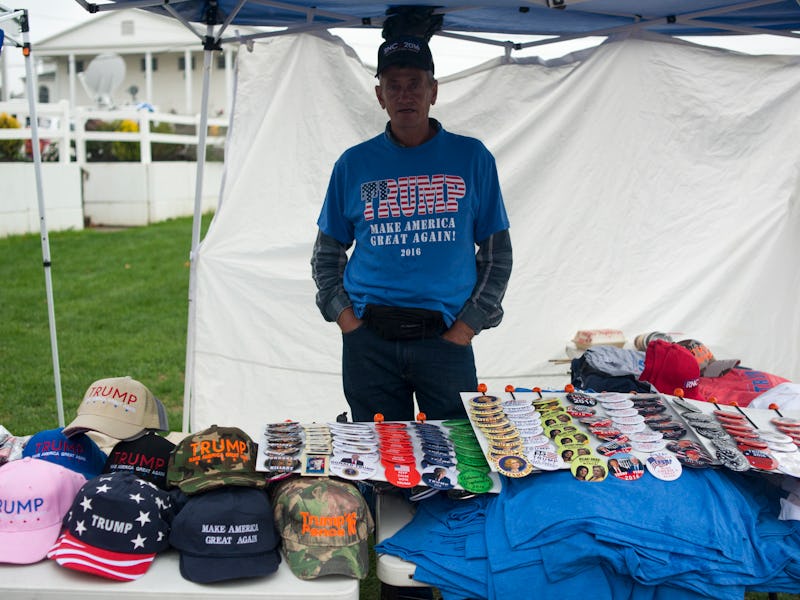The Math Behind Your Dad's Irrational Support of Donald Trump

In this election season, real-time fact-checking has emerged as a way to simultaneously learn the truth, while a political candidate lies from the podium. This is particularly true in the case of Republican candidate Donald Trump, who has consistently been caught making up facts.
You might think that the truth would turn a Trump supporter into a skeptic, but facts pale in comparison to the social influence of others when it comes to creating opinions.
Perhaps Trump realizes something that social scientists have been arguing for a decade — when a person’s belief about something changes, it also affects belief in other ideas. If you convince people Hillary Clinton wants to abolish the Second Amendment (the right to bear arms), you might also be able to convince them she wants to give undocumented immigrants amnesty.
But the predicability of this theory has been difficult to pin down. That’s why a team of international researchers, led by sociologist Noah Friedkin, created a mathematical model that they hope will help explain the relationship between social influences, environmental factors, and opinions.
In a paper published Thursday in Science, the researchers contend that the beliefs, held by only a few, have the capability of influencing entire interpersonal networks. In complex circumstances, underlying beliefs can thwart fact — such as the thought that man is too insignificant to have an effect on the planet, and that’s why some people still think that climate change is a hoax.
Facts pale in comparison to the social influence of others.
Researchers used a model with individual nodes that represented the different certainties of belief in “truth statements.” These beliefs may have been changed because of interactions with other people, and each node varied in how much it is open to this influence. The overall system was affected by factors that represented interpersonal influence networks — which in turn affected how much each statement was considered to actually be true. It’s highly complex algebra that attempts to determine what it takes for someone to be absolutely certain of a belief.
“The mathematics of the model allow a calibration of the influence network and logic constraint structures of a population,” the researchers write. “That is, an interference on what logic structure is consistent with observed trajectories of belief.”
The researchers acknowledge that this “field of science is in its infancy,” but they feel that their model could help reduce the “hazard rate of policy fiascos.”
Essentially, if people paid more attention to the structural features of small-group interpersonal influence systems, then they could more succinctly convince them why a policy is necessary.
For example, Democrats might be more successful in advocating for the Affordable Care Act in rural America, if they better understood the complex health and mental health issues that cause many rural Americans to distrust the government.
Reducing belief system dynamics to numbers, illuminates how influential these factors really are. Because at the end of the day, the truth is that people are more influenced by their beliefs than they are by facts.